Bagworms are tiny little creatures that will not harm you, but can be highly destructive to the trees on your homestead. These non-poisonous worms feed on the leaves of trees and plant foliage – sometimes in massive quantities.
Nearly 200 different trees are targeted by bagworms. These parasites are native to North America, but primarily infest the eastern and southeastern regions of the country.
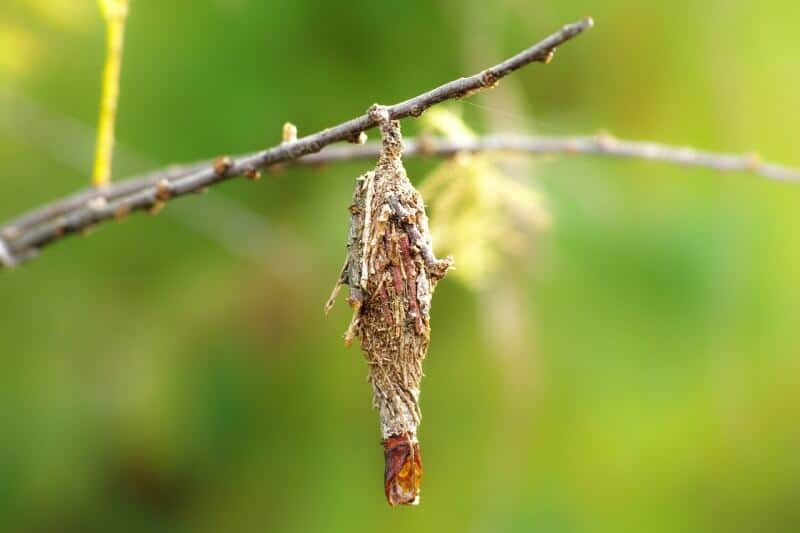
It is nearly impossible to see bagworms when they are in their larvae caterpillar stage without a magnifying device. You do not typically know that the trees on your homestead are infested with bagworms until they create the “bags” that contain are dangling from leaf filed branches.
There are multiple different species of bagworms – also commonly referred to as webworms. These tiny pests are capable of consuming up to 80% of the trees they infest.
The pouches that bagworms spin are created from both their silk, and small amounts of foliage that their host tree, plant, or shrub, provides. The larvae use the silk strands like parachutes to move about their host.
They weave the matter tightly together to both hide and strengthen the bag. A bagworm pouch is filled with eggs that grow into larvae that are typically 2 inches (about 30 to 50 mm) long.
Bagworm Facts
Mature bagworms are about the size of a quarter. Female bagworms, once they reach maturity, never leave the bag, and ultimately die inside the pouch. They are yellow in color, and resemble maggots. Female bagworms appendages are small when compared to their body dimensions, eyes, and mouths. They do not have antennae or wings.
Only the Grass Bagworm and Evergreen Bagworm varieties produce male moths that are capable of flying once they reach maturity. These bagworms have clear wings that measure about one inch wide and have black and furry bodies.
The pouches bagworms create are about one and a half to two inches long. They are shaped like a spindle, and hang sturdily from infested trees, plants, or shrubs. It is not uncommon for small bagworm pouches to be mistaken for pine cones.
Bagworm Life Cycle And Reproduction
The bagworm life cycle encompasses four stages – egg, larvae, pupal, and mature adult. Bagworms lay eggs that hatch as moths between the last days of May through the early weeks of June.
After the bagworm eggs hatch, the larvae start spinning a silk strand that dangles down from the pouch. Some larvae are transported to trees, plants, and shrubs that are close by via the wind.
Next, the larvae locate a host and start to spin a new protective pouch around themselves. The bagworm remains inside the pouch with only its head remaining visible so it can eat from the host tree, shrub, or plant.
The bagworm larvae will keep feeding until they reaches maturity – usually around the final days of August. It is then when they attach their bag to a tree branch or sturdy portion of a plant or shrub, and begin cycling into a pupae.
Come September, male bagworms will mature and reappear as small, furry insects that resemble moths. Once both a male and female bagworm both mature and mate, they will die almost immediately after the coupling.
Male bagworms move outside of the pouch after mating, and die only a short distance from where the reproduction ritual occurred. The female bagworms become mummified inside the pouch around the clutch of a few hundred to up to 1,000 eggs they produce.
The larvae are about 2 mm long when they hatch, and grow to reach about 25 mm long. The top of the bag is sealed shut before they enter their next state of development.
Once the bag is closed, the larvae switch their position so they are now facing downward as they morph into the pupal stage. The young bagworms continue to feed during this four week stage. Come September and October, mature males fly away to find a mate.
Just a single generation of bagworms are born annually. Bagworms winter over as eggs inside the belly of the mummified mature female.
Trees that Bagworms Favor
Bagworms will infest almost any type of tree commonly found in North America – but they do favor some varieties over others:
- Elderberry
- Apple
- Maple
- Juniper
- Birch
- Cypress
- Sycamore
- Elm
- Pine
- Poplar
- Spruce
- Oak
- Black Locust
- Willow
Are Bagworms Harmful?
Bagworm infestations can cause severe damage to trees, plants, and shrubs. Only deciduous plants, shrubs, and trees can fight off these tiny parasites. Because new leaf growth occurs annually on deciduous plants, these pests cannot typically kill them. Even though bagworms are not prone to killing deciduous trees, plants, or shrubs.
Bagworm Natural Predators:
- Birds
- Mice and other rodents
- Winter
If you are lucky, the frigidly cold temperatures during the winter will kill any bagworm eggs living on your homestead. The brown-colored pouches the bagworms make are typically more visible to birds during the fall and spring, which can further help you get rid of an infestation of which you may not even be aware.
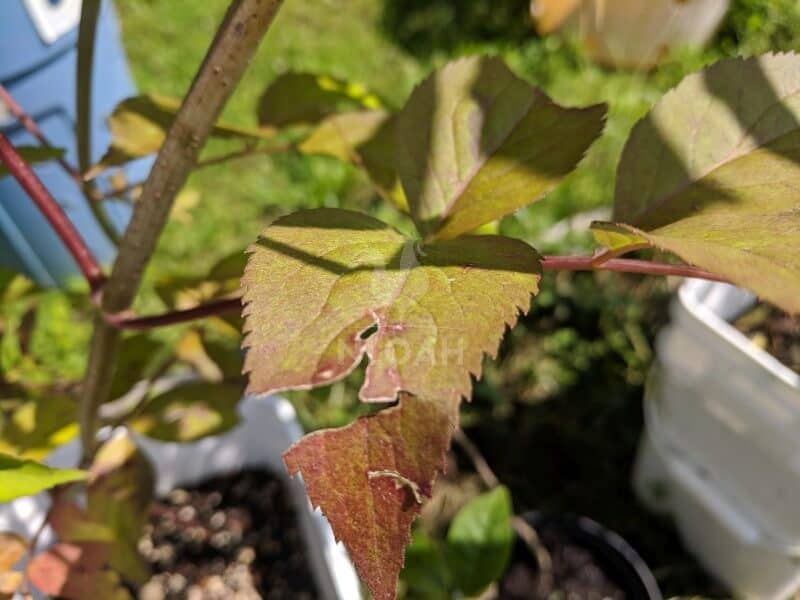
Bagworm Prevention And Control
Natural or manufactured insecticide must be used to control bagworms on all types of trees, plants, and shrubs on the homestead, or they will ultimately perish. For best results, spraying to prevent or kill bagworms should happen at least by the middle of June.
By the early weeks of July, the bags will be filled with growing larvae that will soon be seeking hosts. Bagworms do the most damage during the larvae stage when they are caterpillars focused on feeding on plant matter.
Bagworms, unlike many destructive garden pests, do not spread quickly, largely because the female is incapable of flying. Typically, bagworm infestations are spread via wind dispersion, and through contaminated garden center or nursery stock.
Bagworm larvae feed upon the leaves or needles of their hosts. The bagworm caterpillars dine upon the upper epidermis area of the hosts and often make holes in the leaves. The damage caused to evergreen trees and shrubs is often the most notable.
Unfortunately, unless you diligently check all potential hosts on your homestead, bagworm infestation go unnoticed until a significant amount of damage becomes visible, or if you are lucky enough to stumble upon a dangling bag.
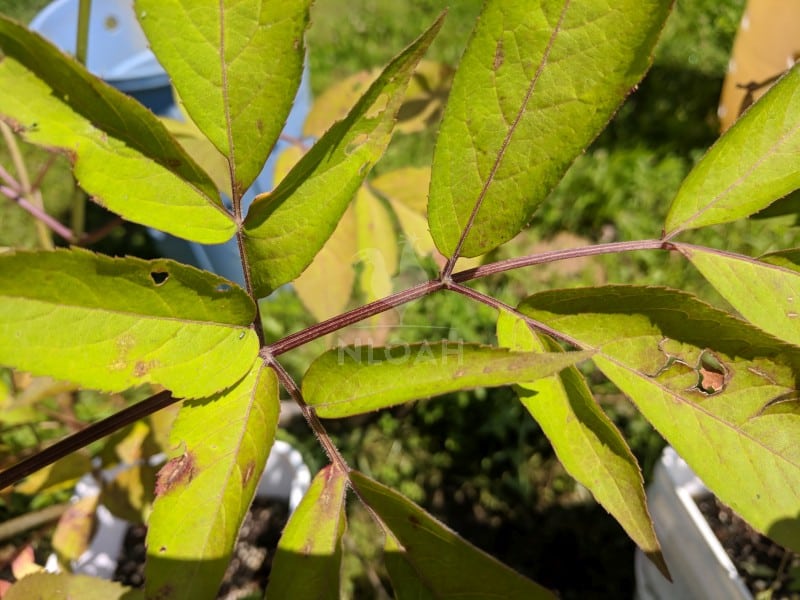
How To Get Rid Of Bagworms
There are multiple ways to rid your homestead of bagworms. And yes, spraying them with a simple soap and water solution can actually work.
How to Get Rid of Bagworms with Soap and Water
Instructions
- Mix together 2 tablespoons of liquid dish soap and 1 gallon of warm water.
- Stir the mixture until it is thoroughly combined and sudsy.
- Pour the bagworm control mixture into a clean agriculture spray.
- Close the cover on the sprayer, and pump it until pressure has built up and the nozzle is somewhat difficult to squeeze.
- Using a stick with a pointy end, puncture the pouches of bagworms that you find on the homestead. Make sure to find a long stick because the bagworms can (and will) weave their pouches high into the trees.
- Poke a hole through the bagworm pouch with the stick.
- Spray the dishwashing mixture into the bag and cover the exterior of the pouch until it is saturated.
- There is no need to cut or pull the bagworm pouches after drowning the pests inside, but you can do that if you’d like.
Another great way to rid the homestead of bagworms involves tedious manual labor. Walking to inspect all potential hosts and then cutting away the bagworm pouches by hand – along with any dangling silks. The silks left after a bagworm infestation could strangle young branches.
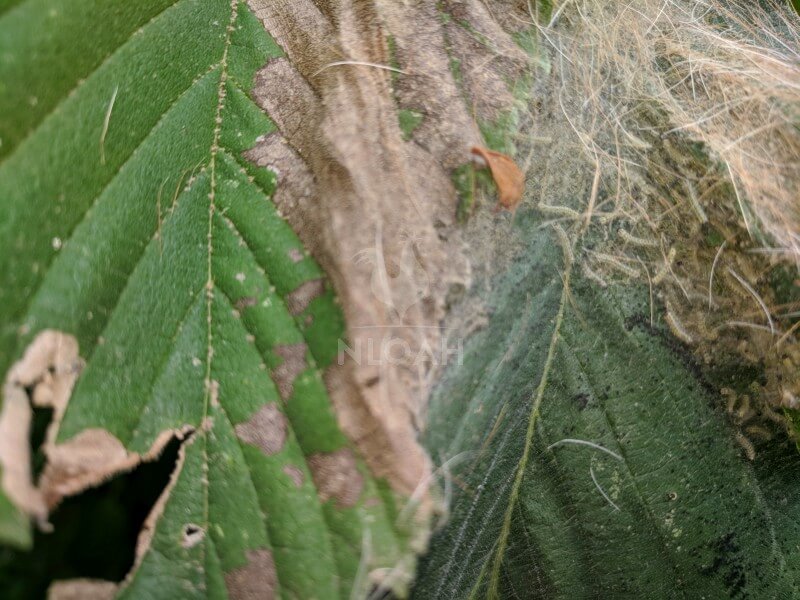
Now, I am going to warn you – the miniscule parasites both look and feel gross. But, do not let that deter you from removing every bag you find the moment you discover it. After all, as a homesteader you’re probably wearing work gloves anyway.
Collect the bagworm pouches as you complete the inspection, putting them into a plastic bag after they are cut or hand pulled from a tree, shrub, or plant. Tie the bag tight once it is full, and place it in a trash can with a firm fitting lid until pickup day.
You can also burn the sack of bagworms, but make sure to stand over your burn barrel to ensure none of the larvae in the bag are blown free by the wind.
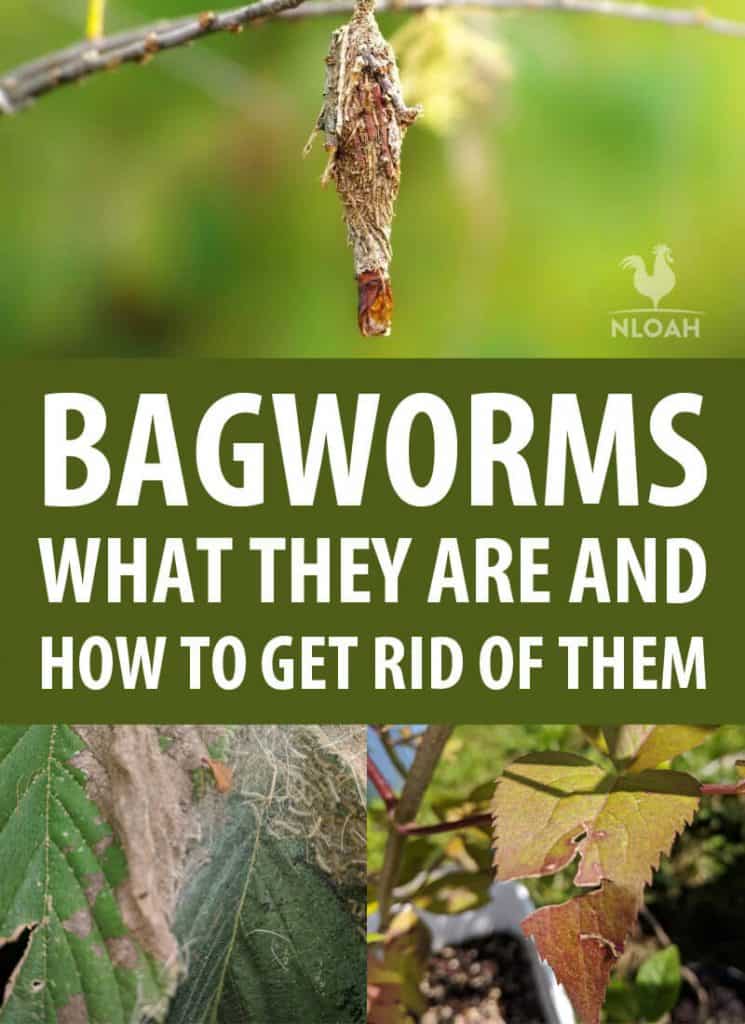

Tara lives on a 56 acres farm in the Appalachian Mountains, where she faces homesteading and farming challenges every single day, raising chickens, goats, horses, and tons of vegetables. She’s an expert in all sorts of homesteading skills such as hide tanning, doll making, tree tapping, and many more.

I burn ’em out using a torch. Works.
We had new halo hedge that was beautiful for 3 years. We trimmed some dry branches a year ago and the bushes just look awful. We blamed it on the light trimming. Now I was out there watering and saw 3 bag worms (just like ones we saw on our evergreen bushes) so possibly that was what was damaging the bushes?
Very good article. I once lost some very mature cedar trees that were the focal point at the entrance to my cabin in the woods. I did not notice them as being bags of worms but thought they were some kind of cone…until my trees literally died before my eyes. Unfortunately, they had to be removed and destroyed the beautiful entrance to my cabin. Now I am faced YEARLY with what we call TENT WORMS that tend to only infest fruit & nut trees (in my area it is the wild persimmon, huckleberry & hickory trees). They destroy the leaves on many branches and most are so high up they are almost impossible to reach, especially on the large mature trees. I am able to use very long poles with a torch wrapped in oil soaked material to burn the webs and HOPEFULLY also burn the worms. I know some fall that are still alive as I have found them crawling on me after I have burned the webs. Is there ANYTHING that can be done to keep these pests from making their appearance each year? Where do they spend the winter months? Are they in the soil & can something be sprayed to prevent them from maturing to the worm stage? In my 40 acre homestead are thousands of mature trees and it is an unsightly annoyance to have them eat away the foliage. They do not kill these trees, just the leaves on the branches they build their webs or tents. I would appreciate ANY INFO or ways to control or manage these horrible insects/worms. I normally use cold pressed Neem Oil for all insect control but these are so high in the trees that I can’t reach them to spray. Thank you for any info you can offer in trying to control these invasive insects/worms. Thank you for the excellent info you share as I look forward to each article you publish!!
Try using ACE caps on the trees that are to large to spray. But do not use them on trees that produce edible fruit as it can get into the fruit.
https://www.amazon.com/Medicap-AC1210-Systemic-Insecticide-Implants/dp/B006MY83Q6?keywords=ace+caps+for+trees&qid=1653691312&sr=8-2&linkCode=ll1&tag=nloah-20&linkId=7ffe8d51e0cc5251cf681889a289fccc&language=en_US&ref_=as_li_ss_tl